It rises conspicuously amid green rice paddies as far as the eyes can see. Rectangular in shape and made from red bricks that are much older than other structures in its vicinity, Candi Jiwa is a low-rise ruin of a Buddhist sanctuary that was long forgotten by the local people. Visiting this ancient site without having the slightest idea of what it actually is would probably lead to disappointment for some people, especially after having to drive several hours to this quiet village on the sweltering coastal plains of northwest Java – and only to find a ‘chopped off’ temple. However, appearances can be deceiving.
Arriving from the bustling metropolis that is Jakarta, Batujaya is the complete opposite of where we’ve just come from. The Indonesian capital’s sea of construction projects and towering skyscrapers has given way to endless paddy fields, which together with those of other villages and districts in Karawang (the regency that Batujaya is part of) form one of the most productive rice baskets in the entire country. It was probably the very same reason, made possible by Java’s fertile volcanic soil and many rivers, that helped support human settlements in this area over millennia.
For many generations, the residents of this village had been living around small earthen mounds, locally known as unur, not realizing what was actually hidden underneath those layers of soil until 1984. That year, local archeologists unearthed ancient structures dating back to the time when this corner of Java was part of Tarumanagara, a 4th– to 7th-century AD Hindu kingdom, whose inscriptions are some of the earliest ones discovered in what is now Indonesia. And further research has shown that some of the ancient structures of Batujaya were constructed as early as the 6th century, making them the oldest temple ruins ever found in the entire archipelago.
Subsequent excavations and studies also revealed another interesting fact: the local community had had contact with India long before the temples of Batujaya were built, as proven by the discovery of pottery shards and beads from Arikamedu. This ancient port that is now in Pondicherry, southern India, flourished between the 2nd century BC to the 8th century AD and was known to have traded with places as far as Rome. And it appears that the northern coast of West Java was also a part of their vast trade network, which consequently helped introduce religions from the subcontinent – notably Hinduism and Buddhism – to Java.
But if Tarumanagara was Hindu, why were the ancient temples of Batujaya Buddhist?
Purnawarman was probably Tarumanagara’s most famous ruler, a king who identified himself as Vishnu, one of the principal deities in Hinduism. However, according to historical records from the Sui and Tang dynasties in China, in the capital of Tarumanagara there were also animists living alongside Hindus, although Buddhism was not widely practiced. The fact that the most intact relics from this ancient kingdom are Buddhist suggests there might have been a great degree of religious tolerance during this period.
Candi Jiwa, usually the first structure modern-day visitors see in Batujaya, doesn’t give away its Buddhist origin at the first glance. Not only are statues of the Buddha absent, but so too are ornamental elements usually associated with Buddhist temples. However, upon closer inspection, its upper section when viewed from above actually resembles a lotus. At its center is a pedestal on which a stupa or a big statue of the Buddha might have rested when this site was still used as a place of worship. No stairs are found around the structure, which with a little imagination would give this shrine the appearance of a stupa or the Buddha sitting atop a floating lotus.
From Candi Jiwa, the largest structure within the Batujaya temple compound can be seen behind the trees that surround it: Candi Blandongan, which is estimated to have been constructed in two phases – first between the 6th to 7th centuries, then continued around the 8th to 10th centuries. Walking under the already scorching morning sun (it’s just past 9am) across a raised walkway that cuts through a paddy field, James and I arrive at the gate to Candi Blandongan only to find it locked. For the next few minutes, we mull the idea of trespassing since we have driven this far from Jakarta. Luckily, a staff member of BPCB (Indonesia’s Cultural Heritage Preservation Agency) arrives before any of our crazy thoughts become reality.
Candi Blandongan turns out to be larger than what I envisioned based on the photos I had seen on the Internet. With four stairs on each side leading to a central structure, Candi Blandongan has a more stately appearance than Candi Jiwa, although no one can tell for sure how the sanctum used to look. Nor can anyone explain with a high degree of certainty why there are holes in the floor of the raised platform of the temple – which can only be seen online since this part is now off-limits to visitors, probably to preserve the entire structure. Unlike most ancient temples on the island of Java which are almost always embellished with intricate reliefs and stone carvings, Candi Blandongan and Candi Jiwa, or at least in their current state, are devoid of such ornaments. Instead, the red bricks – especially at Candi Blandongan – were stacked upon each other, protruding at certain layers, in a way that makes them appear three dimensional. It’s almost modern in philosophy.
Not too far from Candi Blandongan is the last site of our temple-hopping excursion in Batujaya: Candi Serut. We could have walked to the latter if only there was a pathway from the former. However, there are only green rice paddies in front of us, and the only way to go to the other side is by taking a detour via the main village road. Hidden behind rustic houses with an ambiance that reminds me of rural Central Java, Candi Serut comes into sight after a short walk from where I park my car. This last site in fact consists of three different structures with the largest partially submerged. A walk around it will reveal an oddity: the temple is actually tilted to one side. Scholars believe this was probably the reason why the shrine was never completed. Was it caused by a miscalculation during construction? Or was it because of something else? For the moment, no one has the answer, just like the other mysteries the Batujaya temple compound has left us to ponder over. One thing is certain, however, that Candi Jiwa, Blandongan and Serut spearheaded a proliferation of Hindu/Buddhist temples on Java which at one point resulted in the construction of colossal structures the island had never seen before: Borobudur and Prambanan. All things great have a humble origin.
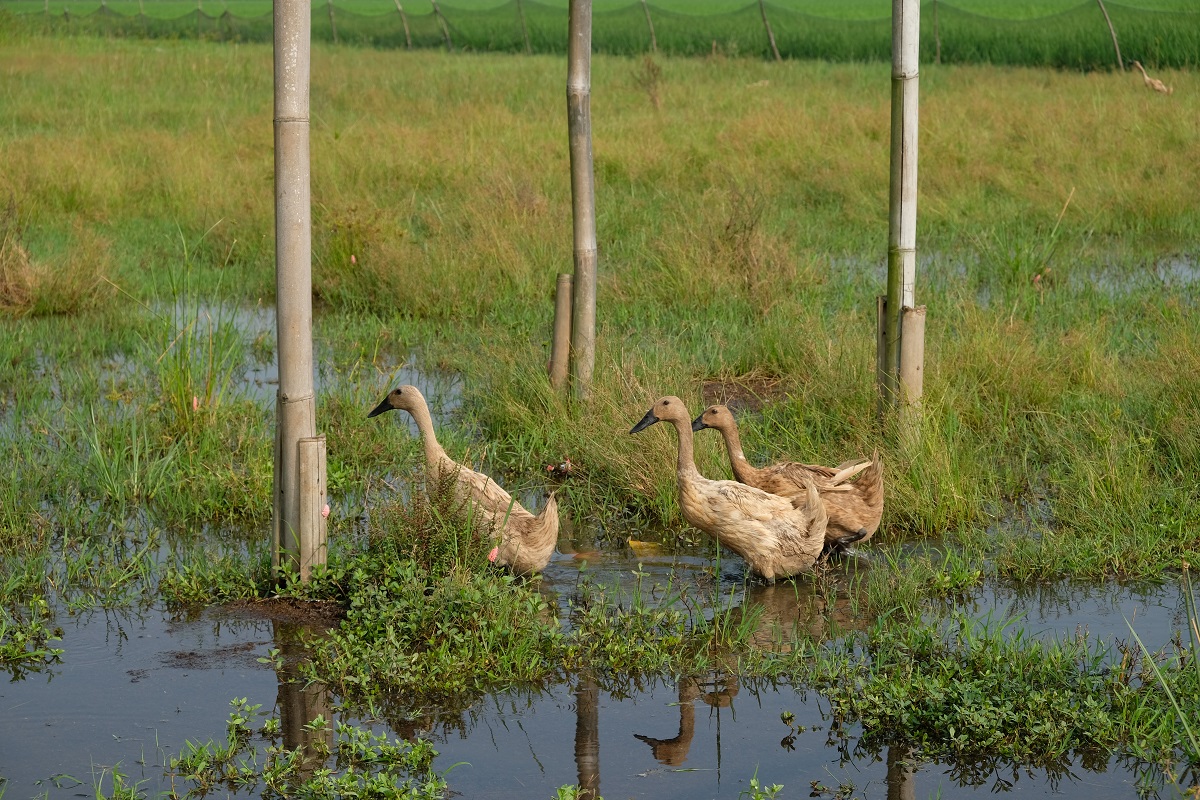
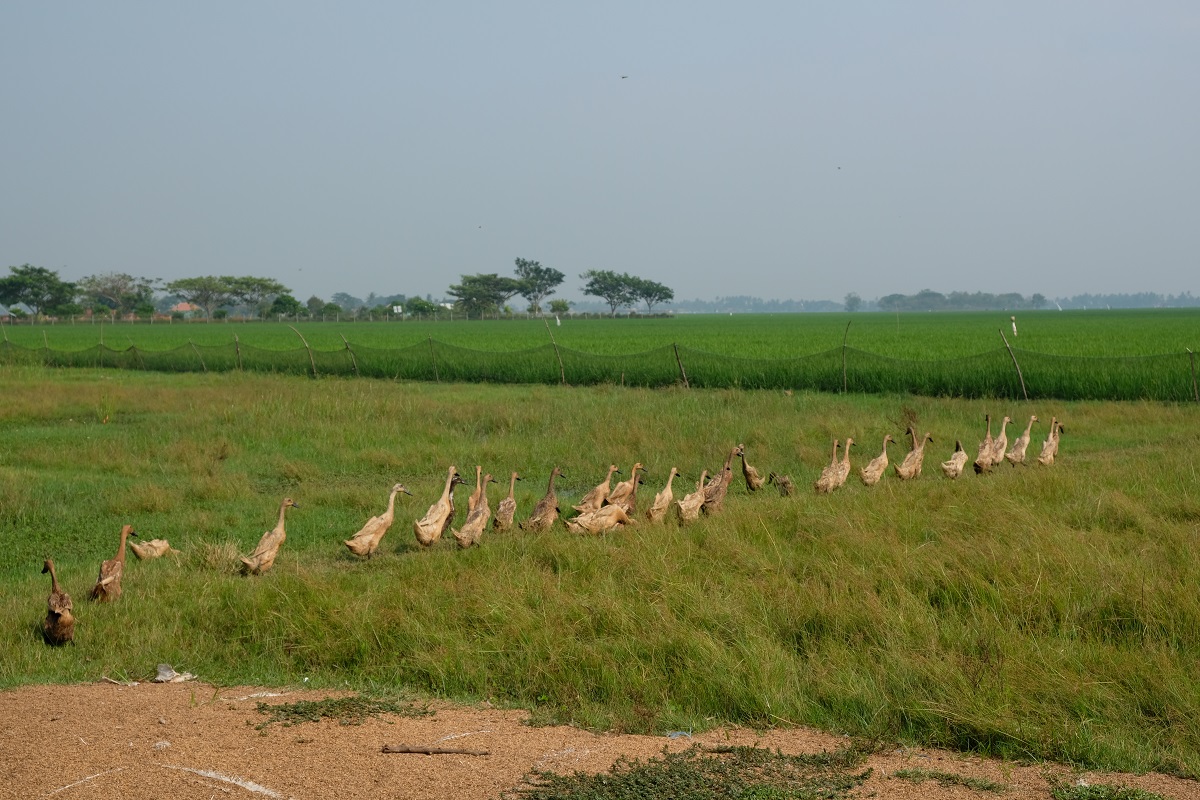


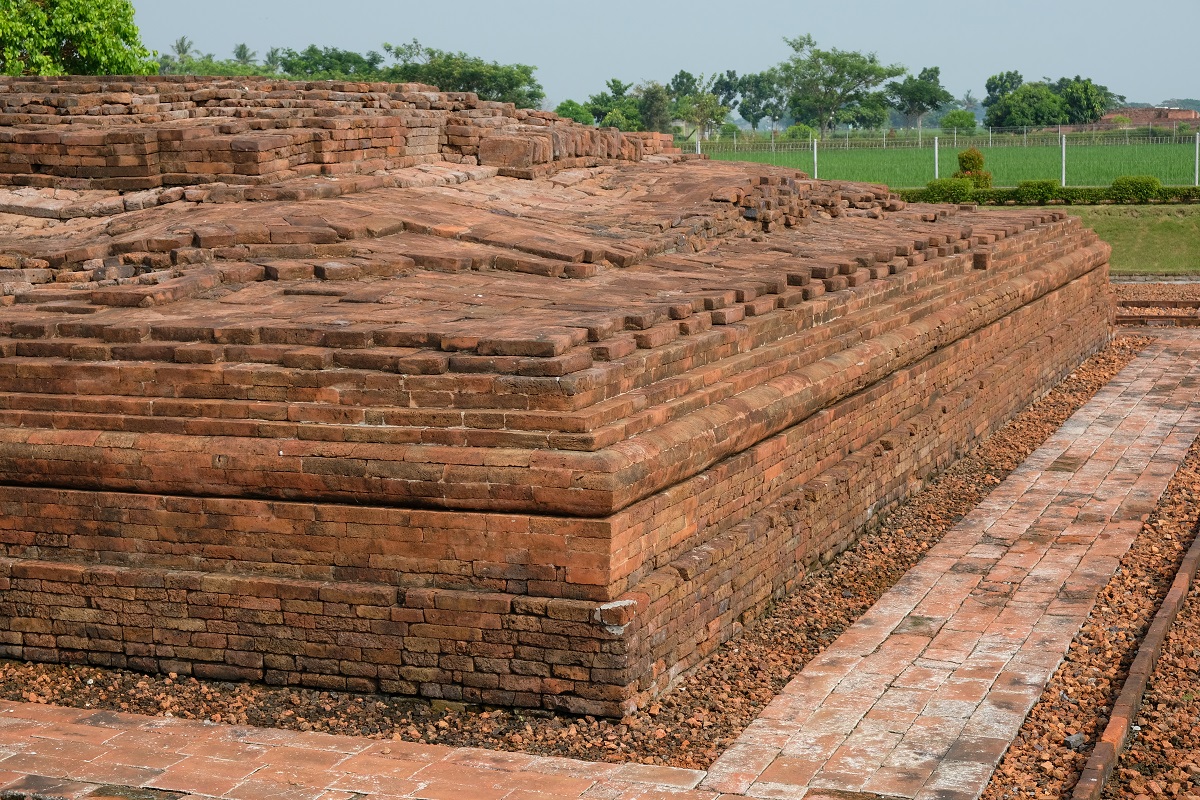

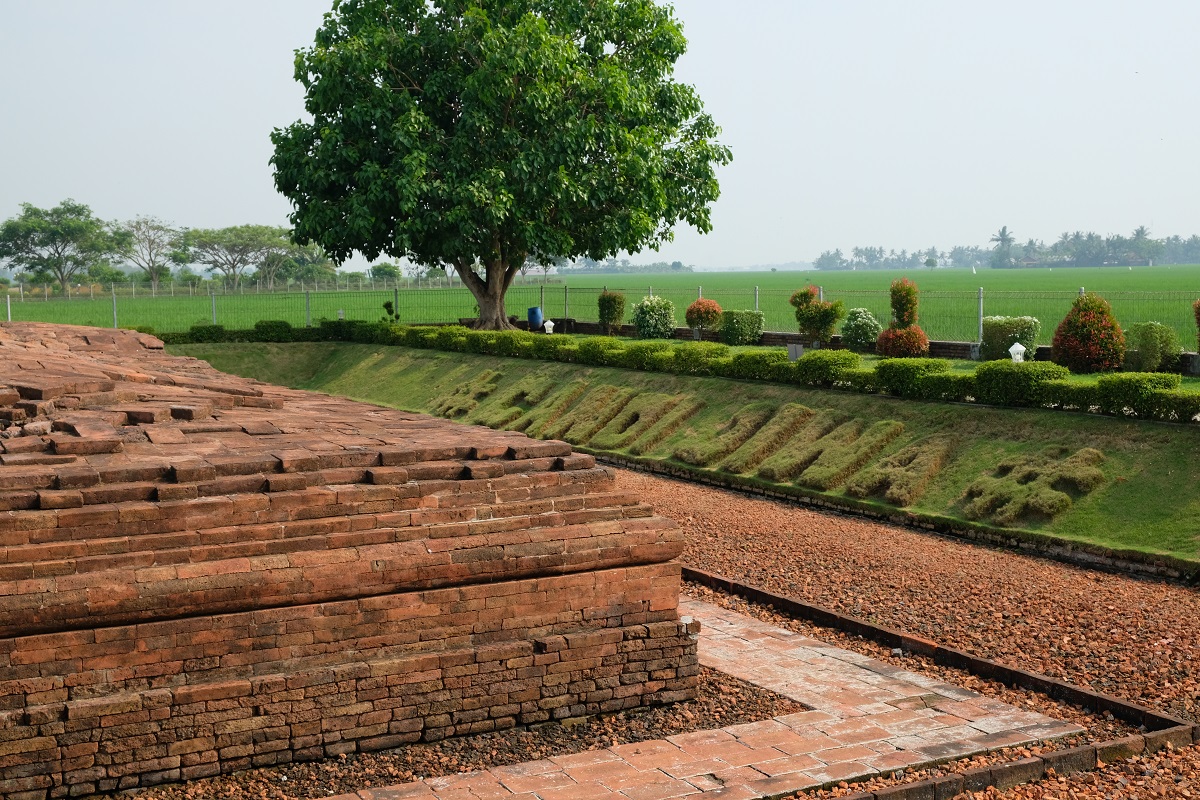
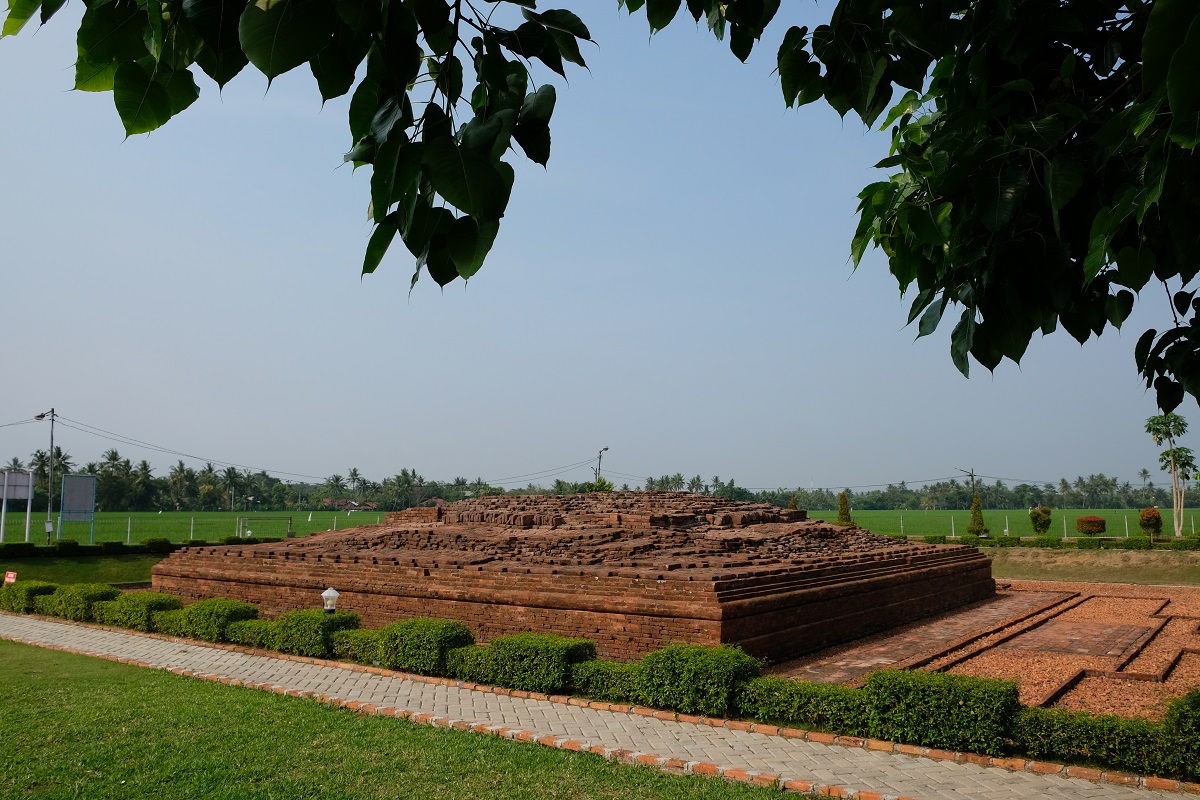
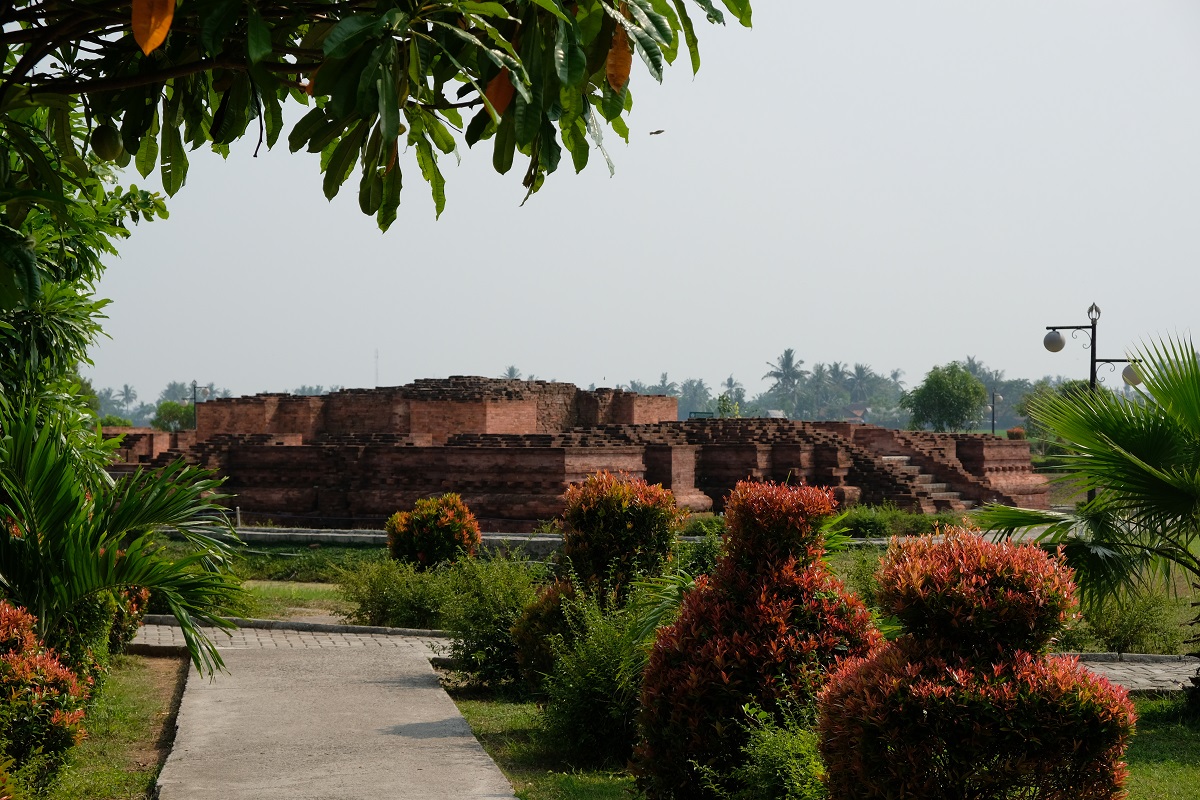
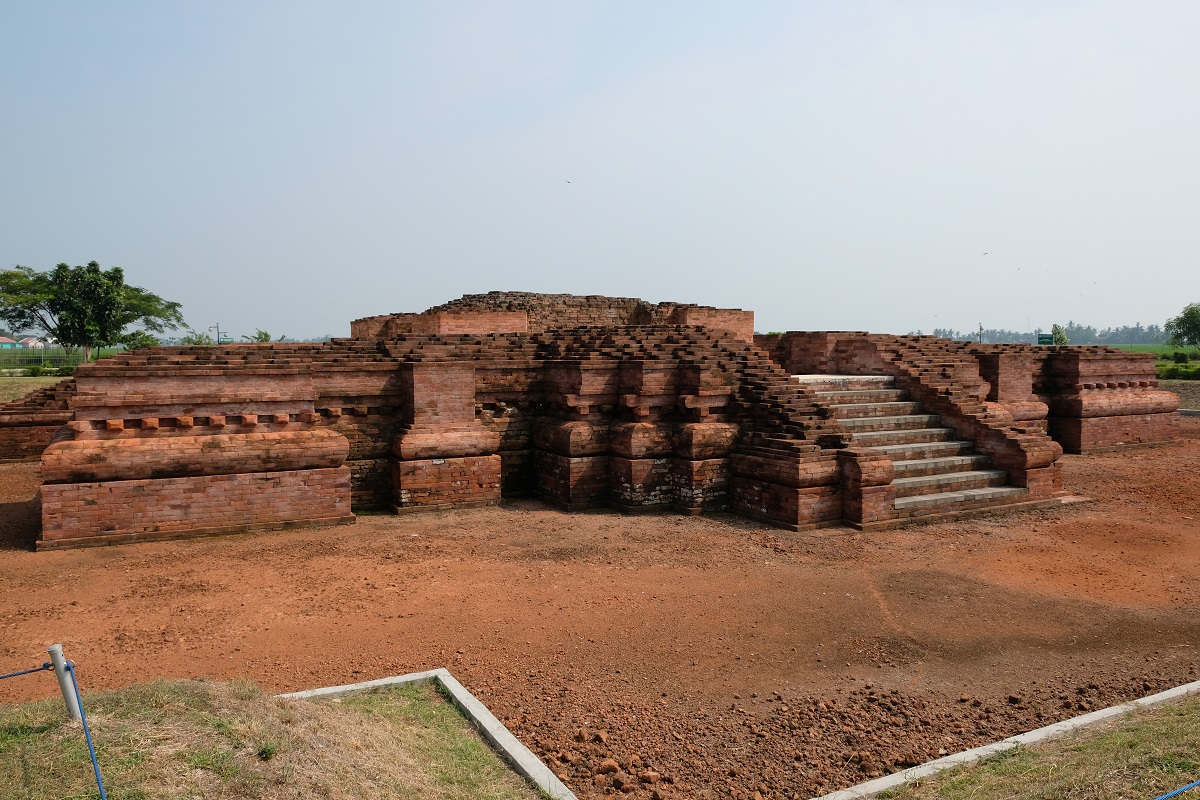
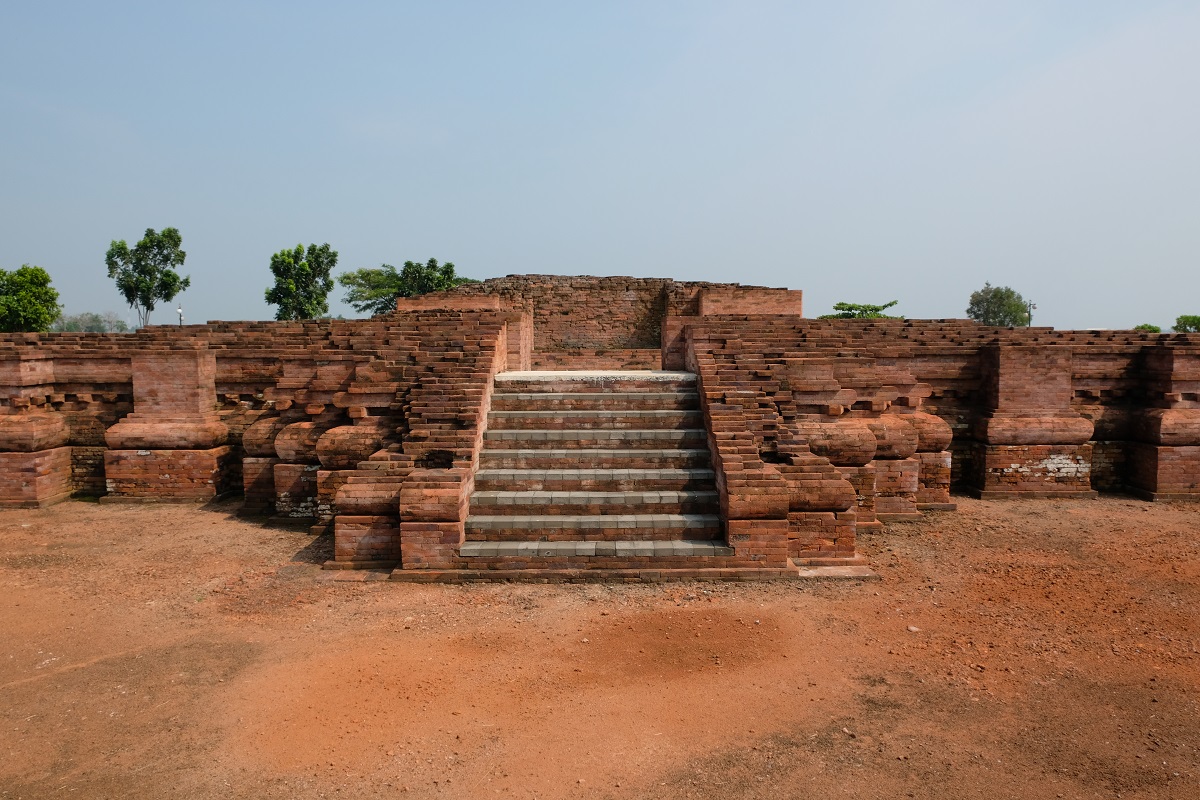

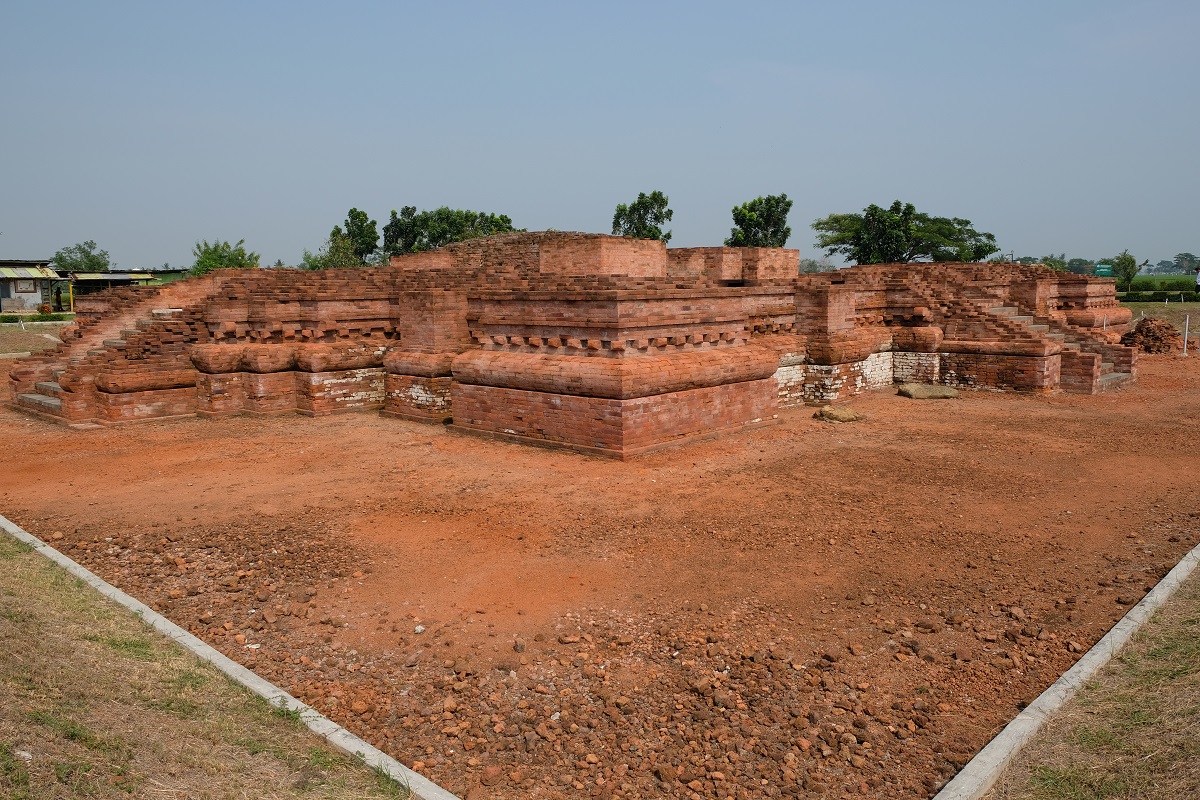
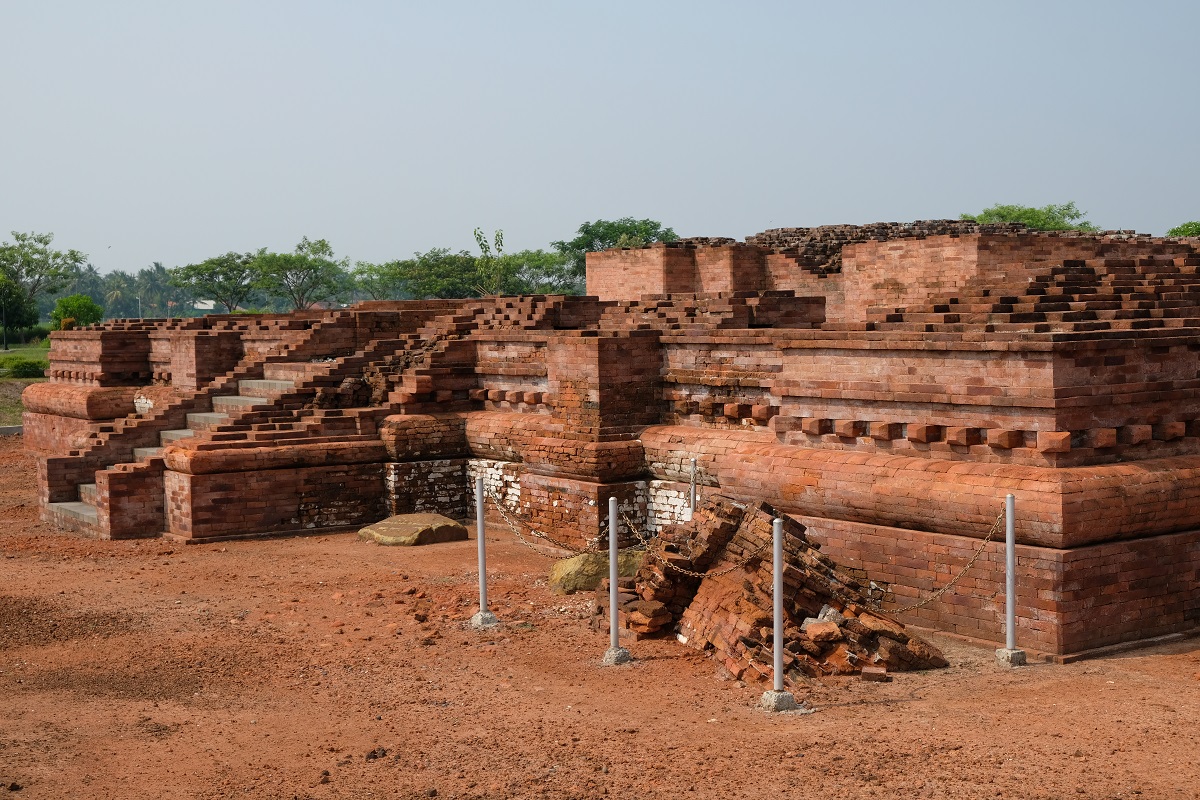
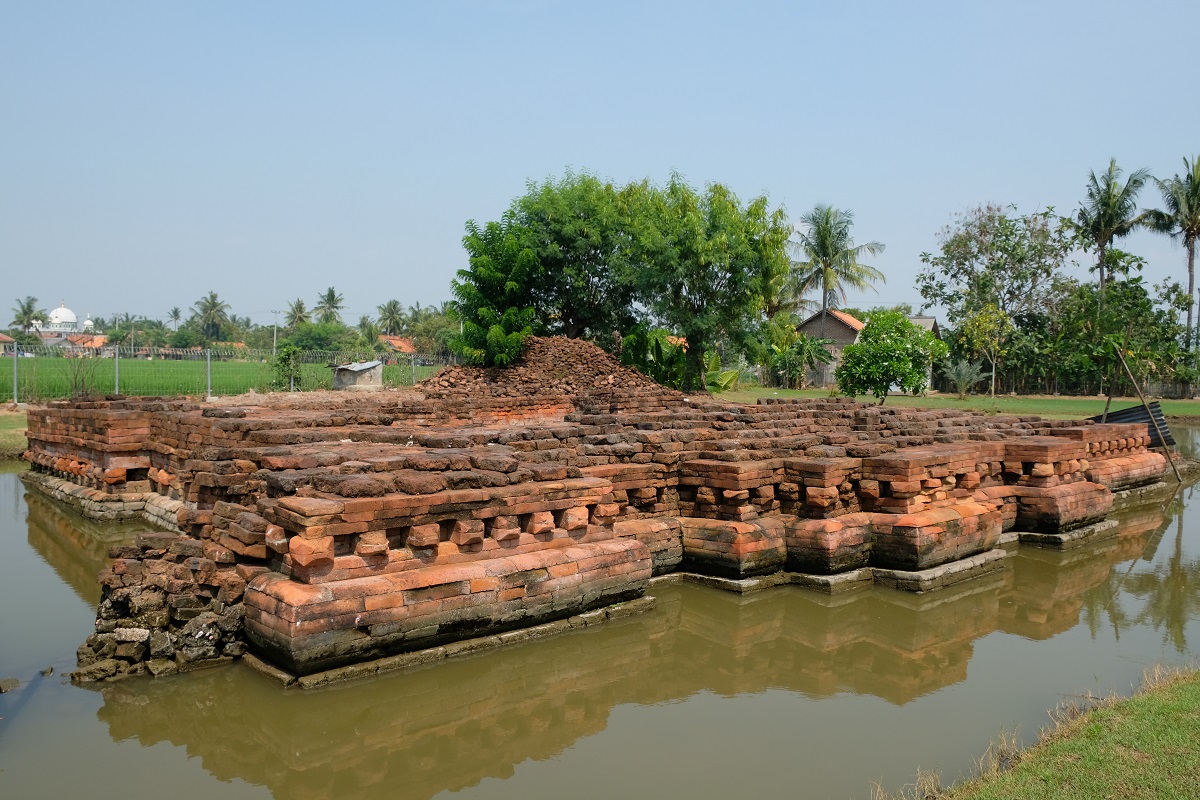
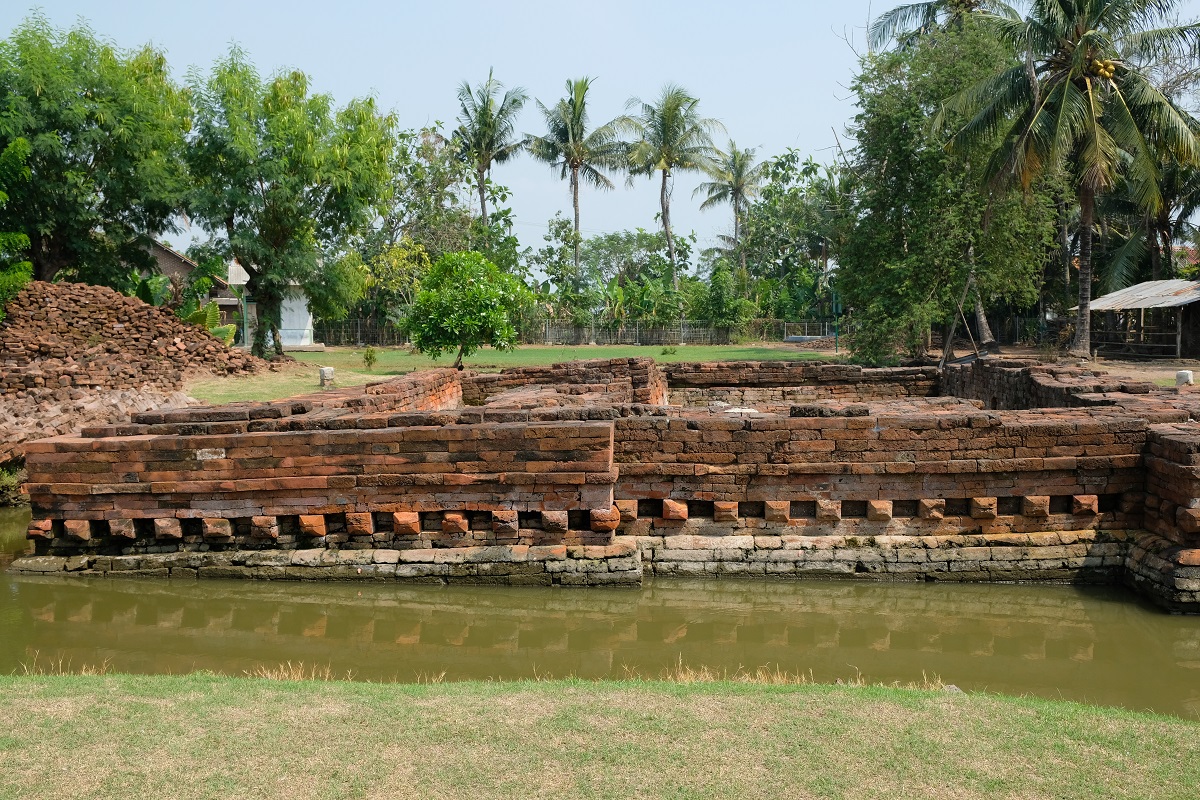

Very timely that you mentioned Indonesia’s long ago contact with India. I’m researching South India’s ancient history, in particular Pondicherry where I plan to set my next novel. Not only did India trade with Indonesia, but scholars from China, Japan, Korea and Indonesia travelled to India to attend any one of its many universities that were established from the 6th century onwards. The Educational Heritage of Ancient India (How an ecosystem of learning was laid to waste) by Sahana Singh is an excellent read that explains how invasion and colonialism ruined India’s educational system that once thrived.
LikeLiked by 1 person
The university in Nalanda was particularly important as it was the center of Buddhism in Asia. During this period, monks from China often made a stopover in Sumatra en route to India, and today you can visit some ruins of Buddhist temples and monasteries on the island that date back to this era.
LikeLiked by 1 person
I love visiting these old sites, no matter how ruined, and imagine what life was like and learn it’s history.The red bricks in the green rice fields also make for great pictures.
LikeLiked by 1 person
Imagining how it was like when these sites were still used is one of the most fascinating parts of visiting such places. If only there were records on how those structures looked like in the past.
LikeLiked by 1 person
Lovely! The photos of the ducks are priceless!
LikeLiked by 1 person
It had been a while since I saw runner ducks — when I was still living in a small city during my high school years, I often saw them every morning passing by in front of my parents’ house. Seeing them in Batujaya brought back some nice memories.
LikeLike
Something seemed familiar about this post and I realized it was the ducks that I remember from James’s post. Then the images of the rice paddies, and the mention of the locked gate. It is a bit embarrassing that I remember these things more than the actual temple. I’m glad I got a second change to learn about the history of this old site. It’s amazing that the temples of Butujaya predate the much more “famous” Javanese temples. It’s also interesting and heartening to read about the religious tolerance that probably existed during that period. Nice that you had a little escape to the countryside.
LikeLiked by 1 person
The ducks are definitely eye-catchy, no doubt about that. You don’t need to feel embarrassed, Caroline. I often find myself in your position — remembering the trivial stuff instead of focusing on the main thing. However, these create fond memories. Sometimes what I remember most about traveling to a place is when I get lost and find things most people ignore, or when I accidentally stumble upon a good place to eat that is rather off the beaten path, or when I see animals that I rarely see in Jakarta.
This visit to Batujaya turned out to be more satisfying than what I had anticipated. Probably because it was my first time leaving Jakarta since March, but it was also due to the site’s historical value.
LikeLike
It’s like a pilgrimage to a place I might never visit in person. Hinduism has always been a tolerant religion allowing other faiths to coexist in peace. Beautiful photography and description. The ducks walking in a file stole my heart.
LikeLiked by 1 person
I guess every religion’s problem is those who incite hatred toward the others and who see religion supremacy as the most important thing in life. Runner ducks are so cute, and I always love seeing them quack and run in a rather orderly manner — we humans can definitely learn a thing or two from them.
LikeLike
What you have said is correct theoretically whereas in the real world there is only one religion that is proving to be the bane of humanity as of today, and it’s no secret.
LikeLike
I won’t assume that I get your reference, but I believe blaming all bad things on one religion will not solve anything, nor will it make the world better. We have seen too much animosity in the name of God as these places have witnessed: Northern Ireland, Sri Lanka, Myanmar, Lebanon, and the list goes on and on. What I know is there are people in each religion who have no interest in claiming that they are the most righteous and others are wrong. They just want to live a simple life side by side peacefully with those who are different from them, and there are many places across the globe where this is in fact the norm.
LikeLiked by 2 people
Your meticulous research, as always, makes for fascinating reading, Bama. I’m always amazed when I’m in the presence of such antiquity. Looking at the bricks that are a thousand years old make me wonder about the lives of the hands who made them. I often wish that the veil between then and now can lift, and we can see what it all looked like when it was newly constructed.
LikeLiked by 1 person
Much appreciated, Jolandi. Seeing something that is so old always fascinates me — thinking of how life was like when they were built or made, and the amount of time they had endured until today, just amazing! If I could have a superpower, probably I’d love to travel back in time, not to change anything, but only to see how things were like in the past.
LikeLike
The rusty brick of Candi Blandongan alongside the lush, colorful foliage really caught my eye! I also couldn’t help but note the theme of things being all lined up – from the architecturally disciplined Candi Blandongan and Candi Jiwa, to the sculpted hedgerows, to the geometric rice fields, to the nice, neat row of ducks! Looks like a very pleasant escape from the city!
LikeLiked by 1 person
The color contrast was really delightful — rusty red bricks surrounded by green paddy fields against the clear blue skies. What a nice observation of the patterns, Lex! I didn’t realize this theme until you mentioned it. This half-day trip really was a breath of fresh air after being confined in the city for six months.
LikeLiked by 1 person
As Lexi said, the colour contrast does it for me. It brings back memory of Sri Lanka… Bit surprised at how ‘muddy’ the ducks looked!
LikeLiked by 1 person
I can see why it reminds you of Sri Lanka, although the South Asian country has larger red brick ancient structures. Both are equally hot, though. I’ve seen runner ducks in white plumage, but that is more of a rarity.
LikeLiked by 1 person
This is such an informative write about Batujaya and its surrounds. From your trip and photos, it really does look like the opposite of Jakarta. This is the first time I’ve heard of Candi Jiwa, and it sounds like it has incorporated Buddhism origins in a subtle manner through patterns, ornamental elements and stories behind these elements. It is interesting how both Candi Jiwa and Candi Blandongan comprise bricks stacked on top of each other to make them look three-dimensional. They certainly look that way in your photos.
The rice paddies around Candi Serut and its tilt does sound like a mystery. Maybe it was a part of something, or something that was still a work-in progress. It sounds like there were many rice paddies to be admired in this area – if you are alright under the hot sun 🙂
LikeLiked by 1 person
Either both temples have always been devoid of any sculptures, or their ornaments had long gone due to erosion, but it’s interesting to see the evolution of Buddhist architecture in Java throughout the centuries. I do think there are similarities in the way some bricks at Candi Blandongan were stacked with some wooden structures in East Asia — it might have been pure coincidence, though.
Using the latest technology, I’m sure we can reveal some of the mysteries of Batujaya, including the layout of this ancient site. And when that happens, I can’t help but feel excited to learn more about the civilizations that once thrived in this corner of Java.
LikeLiked by 1 person
The colors are so vivid. Maybe it appears simple compared to many ancient temples, but it seems like a serene little place and definitely worth a trip from Jakarta.
LikeLiked by 1 person
Visiting this tranquil place dotted with ancient temples that appear more impressive in person was such a nice escape, especially after months of movement restrictions due to Covid-19. I’m glad we decided to go, but maybe because we went during the pandemic, the trip felt even more special.
LikeLiked by 1 person
Having begun this post with the ducks, I feel as though we have followed them into the serene, mysterious ruins of the hidden temples.
LikeLiked by 1 person
Well said. That morning, however, they were too busy looking for snails and ignored the ancient ruins altogether. But then they can always see those red brick structures whenever they want.
LikeLiked by 1 person
Pingback: Sunset Peak and 2020 In Retrospect | What an Amazing World!
Thanks so much for suggesting this great little escape from Jakarta, Bama! It was such a wonderful change of scenery, and the contrast between the bleak concrete cityscape and Batujaya’s seemingly endless paddy fields with the ducks and ancient ruins couldn’t have been more stark. We really did luck out at Candi Blandongan – thank goodness for those other visitors who managed to down the caretaker!
LikeLiked by 1 person
2020 has been a blip — the year started quite promising and then things in Jakarta started spiraling down since the third week of March. And here we are, already in the final month of this strange year. I’m glad we went to Batujaya while we could — it really felt so refreshing to see the ancient temples and the green paddy fields after months of a rather monotonous life.
LikeLiked by 1 person
Akhirnya berkunjung juga ya ke Candi Jiwa dan Candi Blandongan 🙂
LikeLiked by 1 person
Krisma! Udah lama banget tak bersua (secara maya). Butuh ada pandemi dulu ternyata supaya saya akhirnya ke Candi Jiwa dan Blandongan 😀
LikeLike
What a impressive place! Bye. K
LikeLiked by 1 person
Despite its relatively small size, it really was an interesting place.
LikeLiked by 1 person